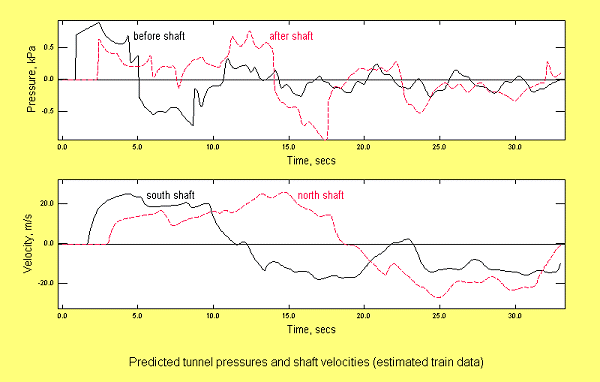

No analysis of the field measurements is included in these web pages. However, the general behaviour is similar to that predicted in simulations undertaken before the tests using the computer program ThermoTun.
Northbound trains entering the south portal of the tunnel generate waves that reach the pressure sensors about ¼second before they reach the shaft. There is a partial reflection of the waves at the shaft, but most of the energy is transmitted (a) along the tunnel and (b) up the shaft. A rapid succession of waves up and down the shaft leads to approximately steady flow conditions for a short period. Reflected waves and additional train-entry effects cause changes, but the next major event occurs when the train passes the shaft. This causes a reversal of flow direction in the shaft.
One-dimensional codes such as ThermoTun can give good predictions of pressures and mean flows in many types of tunnel. A key purpose of these tests was to assess whether three-dimensional effects are an important contributory factor to observed deficiencies in the use of one-dimensional code for tunnels with airshafts. If so, detailed comparisons between predicted and measured data should assist in understanding how to allow for the consequences of the three-dimensional effects.

Predictions made before the test programme